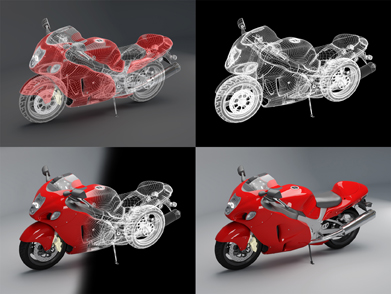Section 2
1. Section 2
1.16. Explore
Section 2: Perspective and Scale
Explore
In Discover you used the zoom feature on a computer to change the size of an object. You may have noticed the following:
- The overall dimensions of the eagle were always in the same proportion of
 no matter what the zoom was set to.
no matter what the zoom was set to.
- When you set the zoom to 50%, the new image is the same shape as the original but its dimensions are
 the original's length. The new image is a scale image of the original. The scale is 50%,
the original's length. The new image is a scale image of the original. The scale is 50%,  , or 1:2.
, or 1:2.
You may have noticed that the scale of a drawing or image may be represented in three ways: as a ratio, a fraction, or a percent.

As you read in Focus, scale drawings are important for the design and construction of homes. Scale drawings are also used in the design and building of many other objects, including automobiles and motorcycles. Scale diagrams and models are typically created before the actual real-life object is created.

© rook76/10142377/Fotolia
Try This 2
Explore a scale model of an International Club tractor. Go to your favourite search engine, and type in the search terms “mad cat toys.” At the Mad Cat Toys website, choose the menu item “Scale Model Ratios,” and then choose “Open the Mad Cat Toys ScaleViewer.” Choose the “construction and farm” category and “International Club tractor.”
- Set the scale model to be at a 1:10 ratio of the actual tractor size. When the scale is 1:10, what is the length of the model tractor? What is the length of the actual tractor?

- Create a calculation you can use to find the actual length of the real-life tractor if you know the length of the model and the scale. Test your calculation using the height of the tractor.

- Predict what would happen to the length of the model when the scale is changed from 1:10 to 1:20. Check your prediction by entering the new ratio in the applet.
- Predict what would happen to the length of the model when the scale is changed from 1:10 to 1:5. Check your prediction by entering the new ratio.
- Use the information to explore other types of models.
![]() Save your responses to your course folder.
Save your responses to your course folder.
Share 2
Share and compare your responses to the questions in Try This 2 with a classmate or with a group of people. Then discuss the following question:
- How does changing the second number in the ratio affect the length of the model?
![]() If required, save a copy of your discussion in your course folder.
If required, save a copy of your discussion in your course folder.